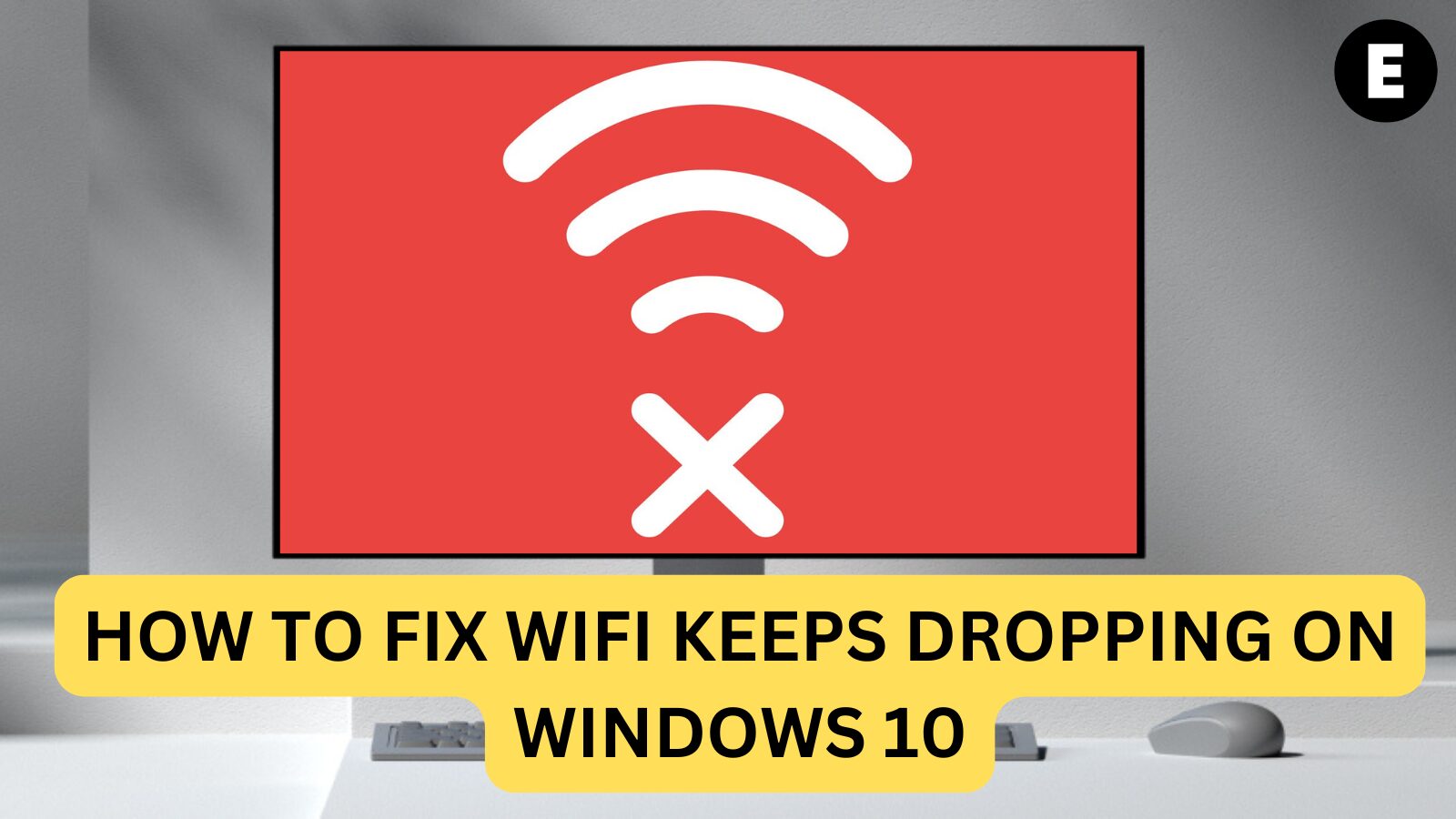Many Windows 10 users face frequent Wi-Fi disconnections, losing internet access. This issue may stem from outdated drivers, compatibility problems, or power management settings. Follow this guide to quickly restore a stable connection!
Why Does Wi-Fi Keep Disconnecting on Windows 10? Common Causes & Fixes
Many Windows 10 users experience frequent Wi-Fi disconnections, which can disrupt browsing, streaming, and work. This issue can stem from various causes, including system settings, outdated drivers, or even router placement. Below, we outline the most common reasons behind this problem and how to fix them.
Common Causes of Wi-Fi Disconnection in Windows 10
- Wi-Fi Sense:
- A feature in Windows 10 that automatically connects to shared Wi-Fi networks.
- It may cause your PC to disconnect from a stable connection while trying to switch networks.
- Power Management Settings:
- Windows may turn off your Wi-Fi adapter to conserve power, especially on laptops.
- This can lead to random disconnections when battery-saving mode is enabled.
- Outdated or Corrupted Drivers:
- If your Wi-Fi adapter driver is outdated or corrupt, it can cause frequent connection drops.
- Ensuring drivers are up to date can enhance connectivity stability.
- Misconfigured Wireless Adapter Settings:
- Incorrect frequency range detection or adapter settings can lead to unstable connections.
- Ensuring the correct configuration in Device Manager can help.
- Router Issues (Damage or Placement):
- A faulty or poorly positioned router can weaken your Wi-Fi signal.
- Ensure your router is placed in an optimal location and free from physical damage.
Quick Fixes for the “Internet Randomly Disconnects” Issue
If you’re facing frequent Wi-Fi disconnections, try these simple troubleshooting steps:
- Restart your router and PC: This refreshes your connection and resolves minor glitches.
- Update your Wi-Fi adapter drivers: Use Device Manager to check for driver updates.
- Modify power management settings: Prevent Windows from turning off your Wi-Fi adapter.
- Reset network settings: Running
netsh winsock resetin Command Prompt can help. - Check router placement and condition: Position your router for optimal signal strength.
- Contact your ISP: If the issue persists, there may be an outage or signal issue in your area.
By following these steps, you can restore a stable Wi-Fi connection and prevent further disruptions.
How to Install 60GHz WiFi Easily: A Step-by-Step Guide
Setting up 60GHz WiFi might seem complicated, but with the right steps, it’s easier than you think! This high-speed, low-latency wireless technology is perfect for gaming, streaming, and high-bandwidth applications. Here’s everything you need to know to install it effortlessly.
How to Fix Wi-Fi Disconnecting Issues on Windows 10
Is your Wi-Fi frequently disconnecting on Windows 10? After identifying potential causes, it’s time to troubleshoot and resolve the issue. The solutions below focus on fixing random internet disconnections on Windows 10. If you’re experiencing different network errors, visit our Help Center for additional solutions.
Prerequisites Before Fixing Your Wi-Fi Connection
Before proceeding with the troubleshooting steps, follow these prerequisites to ensure a smooth repair process:
1. Back Up Your Data (Optional but Recommended)
To prevent potential data loss, we highly recommend saving important files on an external drive. Some troubleshooting methods involve modifying system settings, which could risk data loss. Your user folder can be found in:
📁 C:\Users – This is the folder we suggest backing up.
2. Use an Administrator Account
Some fixes require administrative permissions. Ensure you are using a local account with administrator rights. Need help?
👉 Check out our guide: How to Make a Local User an Administrator in Windows 10
3. Run the Windows Network Troubleshooter
Quickly diagnose and resolve network issues using the built-in Windows Troubleshooter:
- Click Start > Settings > Network & Internet > Status
- Under Change your network settings, select Network troubleshooter
- Follow the on-screen instructions to identify and fix Wi-Fi problems
Start Fixing the Wi-Fi Disconnection Issue
Once you’ve completed these essential steps, you’re ready to troubleshoot and fix the Wi-Fi disconnecting issue on Windows 10.
Method 1: Set Your Home Network to Private Instead of Public
Incorrect Wi-Fi settings can often cause frequent internet disconnection issues. Many users report that having their Home Network set to Public may lead to connectivity problems. You can easily fix this by switching your Wi-Fi network to Private.
How to Change Your Network Profile to Private
1️⃣ Click on the Network & Internet icon in the system tray.
- If the icon isn’t visible, click the upward arrow (▲) to reveal hidden items.

2️⃣ Select the network you’re currently connected to, then click on Properties.
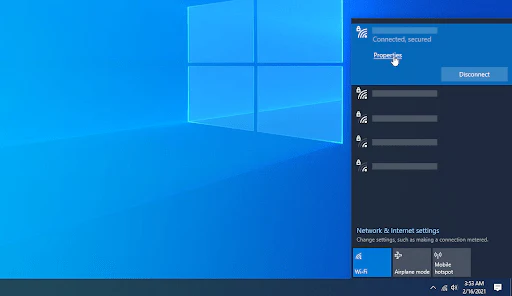
3️⃣ Find the “Network profile” section and switch your connection to Private instead of Public.
- ⚠️ Only use this setting for trusted Wi-Fi networks.
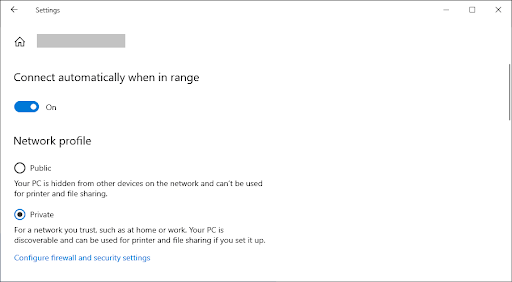
4️⃣ Test your internet connection to see if the disconnection issue is resolved.
✅ If your Wi-Fi still disconnects randomly, proceed to the next troubleshooting method.
Method 2: Disable Wi-Fi Sense
Wi-Fi Sense was originally designed to improve connectivity, but it has been known to cause network interference. Disabling this feature may help resolve Wi-Fi disconnection issues.
⚠️ Important Update (2021):
Microsoft removed Wi-Fi Sense in Windows 10 version 1803. If you’re using a newer version, this feature no longer exists. However, if you’re on an older version of Windows 10, follow the steps below to disable Wi-Fi Sense and potentially fix your internet connection.
How to Disable Wi-Fi Sense on Older Windows 10 Versions
1️⃣ Open the Start Menu by clicking the Windows icon in the taskbar or pressing Windows + I to open Settings.

2️⃣ Click on Network & Internet.
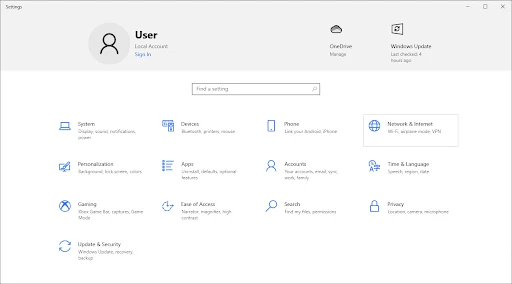
3️⃣ In the left-hand menu, select Wi-Fi, then click on Manage Wi-Fi settings under your current connection details.
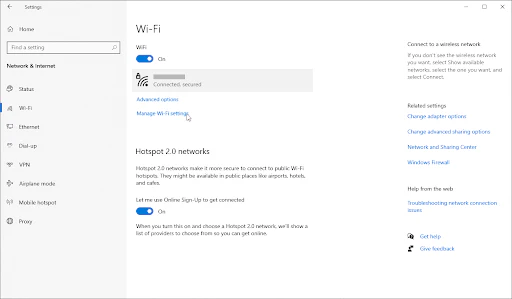
4️⃣ Scroll down to the “Wi-Fi Sense” section and toggle “Connect to networks shared by my contacts” to Off.
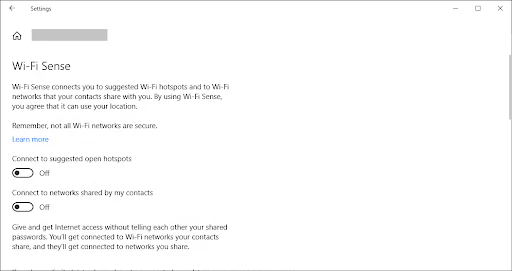

5️⃣ Restart your computer to apply the changes.
✅ Check if your Wi-Fi connection is stable. If you still experience random disconnections, proceed to the next troubleshooting method.
Method 3: Adjust Power Management Settings to Prevent Wi-Fi Disconnection
Your Power Management settings may be causing your wireless adapter to temporarily disconnect, leading to random Wi-Fi dropouts. You can easily fix this by making a small adjustment.
How to Prevent Windows from Disabling Your Wi-Fi Adapter
1️⃣ Press Windows + X on your keyboard and select Device Manager from the menu.
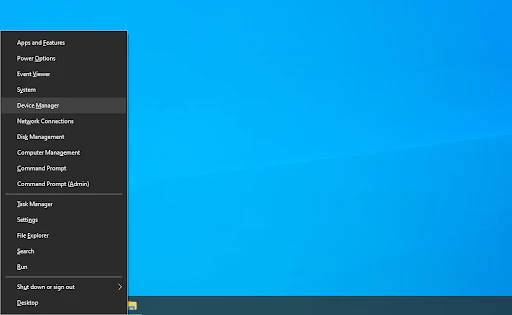
2️⃣ Expand the Network Adapters section by clicking the arrow next to it.
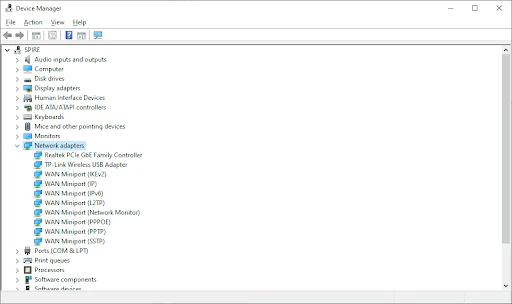
3️⃣ Double-click on your Wi-Fi adapter to open its properties.
4️⃣ Go to the “Power Management” tab and uncheck the box next to “Allow the computer to turn off this device to save power.”
5️⃣ Click OK, then restart your computer.

✅ Test your internet connection to see if the Wi-Fi disconnection issue is resolved. If the problem persists, proceed to the next troubleshooting method.
Method 4: Run the Network Troubleshooter
Windows 10 includes built-in troubleshooters that help diagnose and fix common issues, including Wi-Fi disconnections. Running the Network Troubleshooter may automatically identify and resolve your internet connectivity problems.
How to Use the Network Troubleshooter in Windows 10
1️⃣ Open the Run Utility:
- Press
Windows + Ron your keyboard, type “control”, and click OK to open the Control Panel.
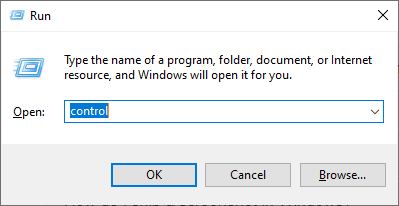
2️⃣ Navigate to Troubleshooting:
- Set View mode to Large icons, then click on Troubleshooting.
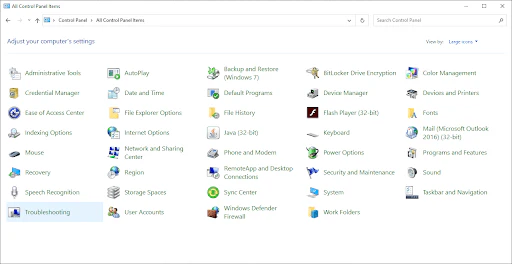
3️⃣ Select Network and Internet:
- Click on Network and Internet, then choose Network Adapter.
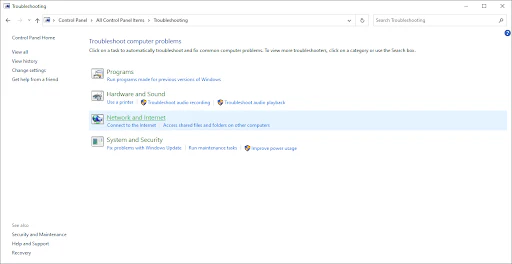
4️⃣ Follow the On-Screen Instructions:
- Windows will scan for issues and attempt to fix any detected Wi-Fi connection problems automatically.
5️⃣ Restart your computer and check if your Wi-Fi connection is now stable.
✅ If your internet still disconnects randomly, proceed to the next troubleshooting method.
Method 5: Reset the Wi-Fi AutoConfig Service
A disabled service may be causing your Wi-Fi to disconnect unexpectedly. Resetting the WLAN AutoConfig service can restore normal functionality.
How to Reset the WLAN AutoConfig Service
- 1️⃣ Press
Windows + Ron your keyboard to open the Run utility.
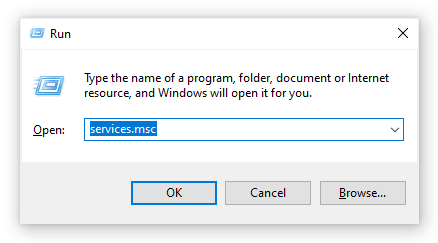
- 2️⃣ Type
"services.msc"and click OK to open the Services window. - 3️⃣ Find the WLAN AutoConfig entry, then right-click on it and choose Properties.
- 4️⃣ Set the “Startup type” to Automatic, then click Apply and OK.
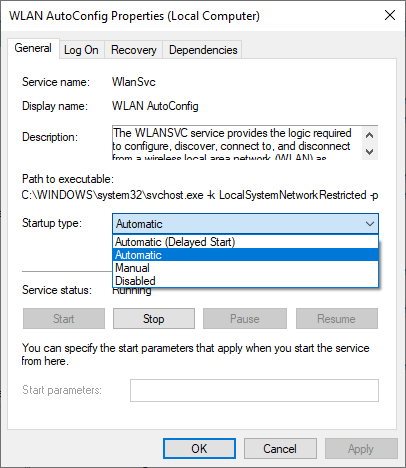
- 5️⃣ Test your Wi-Fi connection. If the issue persists, restart your computer and check again.
✅ Still experiencing Wi-Fi disconnects? Move on to the next troubleshooting method.
Method 6: Update Your Wireless Drivers
Outdated drivers can cause a range of issues, including Wi-Fi disconnections on your Windows 10 device. Updating your wireless drivers may resolve connectivity problems.
How to Update Your Wireless Drivers
1️⃣ Press Windows + X on your keyboard and select Device Manager from the menu.
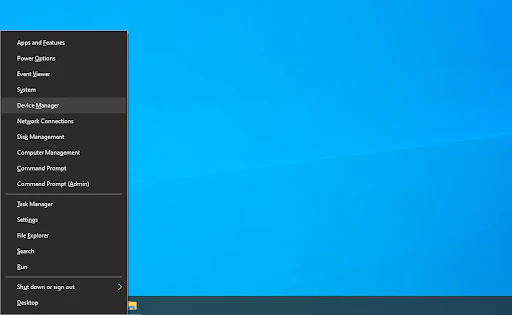
2️⃣ Expand the “Network adapters” section by clicking the arrow next to it.
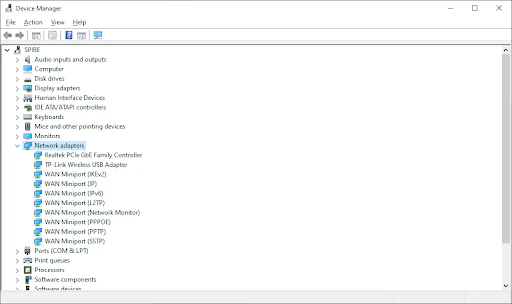
3️⃣ Double-click your wireless adapter, then go to the Driver tab.
4️⃣ Click on “Update Driver” and allow Windows 10 to search for the latest driver updates, either locally or online.

5️⃣ Follow the on-screen instructions to install the driver if an update is found.
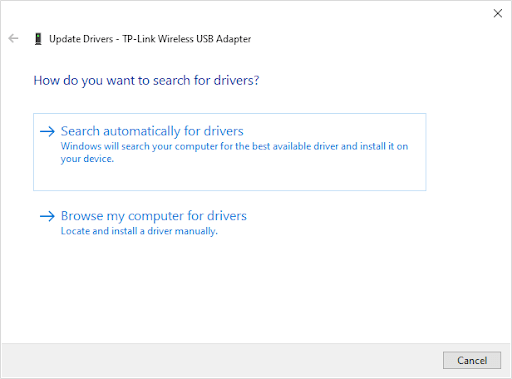
What if No Update Is Found?
If Windows doesn’t detect any driver updates, it’s a good idea to visit the manufacturer’s website to manually check for the latest drivers. If an update is available, download and install it manually.
6️⃣ Restart your computer and test if the Wi-Fi disconnection issue is resolved.
✅ We hope this guide helped you fix your Wi-Fi issues! Enjoy uninterrupted browsing on your Windows 10 device.
Fixed! WiFi Option Not Showing on Windows 11 Settings || Missing WiFi
WiFi Option Not Showing on Windows 11, 10, 8, 7 Settings. Here’s the solution. Watch this video:
Final Thoughts
If you encounter similar Wi-Fi disconnection issues in the future, feel free to revisit this article and try the remaining fixes. If the problem persists, we recommend reaching out to Microsoft customer support or consulting an IT specialist to assess your PC’s health.
We’re happy you made it through to the end! 😊 Thank you for reading
One more thing
If you’re in search of a software company that embodies integrity and upholds honest business practices, your quest ends here at Ecomkeys.com. As a Microsoft Certified Partner, we prioritize the trust and satisfaction of our customers. Our commitment to delivering reliable software products is unwavering, and our dedication to your experience extends far beyond the point of sale. At Ecomkeys.com, we provide a comprehensive 360-degree support system that accompanies you throughout your software journey. Your trust is our foundation, and we’re here to ensure that every interaction with us is a positive and trustworthy one.

